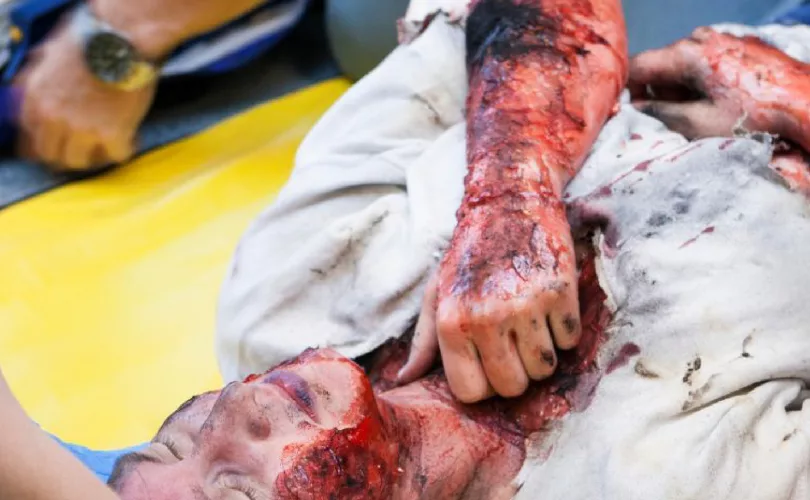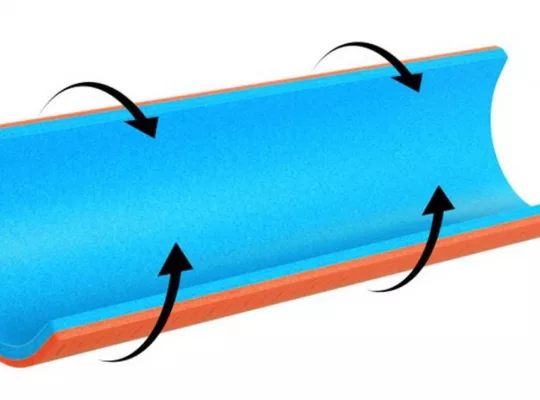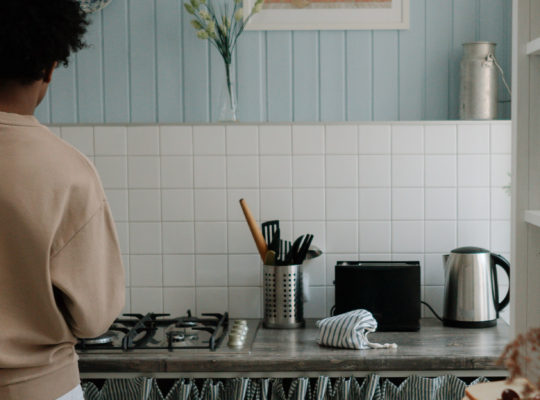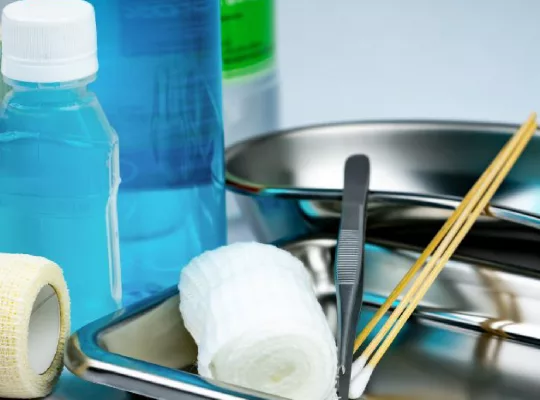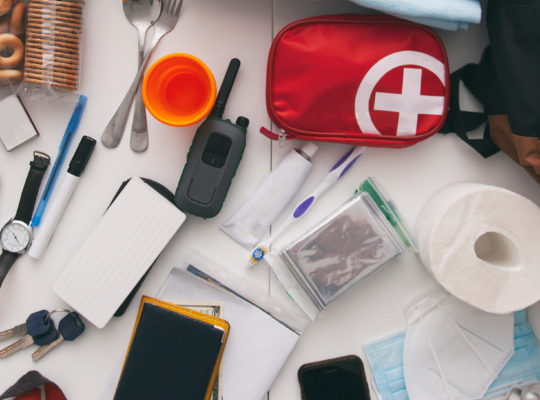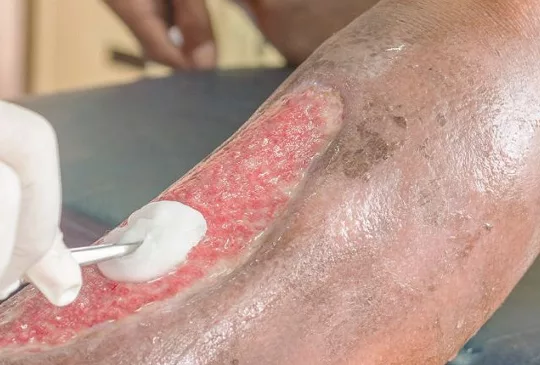If you find yourself with a burn, it is important to know how to treat these burns with a first aid kit. Burns can be very serious, and knowing how to act quickly can be very important in your recovery.
We’re here to give you a helping hand! If you want to know more about how to treat burns using a first aid kit, you’ve come to the right place.
We’ve compiled an ultimate guide giving you all the information you need. Let’s dive in!
What Can You Use To Treat Burns In A First Aid Kit?
When you are treating a burn victim, or are tending to a burn on yourself, there are lots of things in a first aid kit that will help.
Let’s take a look at some of the different items in a first aid kit that can be used to treat burns.
Nitrile Gloves
It is very important to ensure that you keep your hands clean when you are dealing with a burn. If you are treating a burn, it is likely that you will not have the chance to wash your hands properly.
In these situations, it is a good idea to use the nitrile gloves.
If there are some nitrile gloves in your first aid kit, you should put these on before you treat the burn.
Cool Compress And Bowl For Water
If you or someone around you suffers a 1st or 2nd-degree burn, the best thing to do is to run the burn under cold water for between 15 and 30 minutes.
In some situations, it may not be possible to run the burn under cold water.
If you don’t have easy access to running water at the time, or the burn is on part of the body that cannot be placed under a tap, you should place a cold compress on the burn.
The cold compress will draw the heat out of the burn to encourage it to heal faster.
If there is a bowl or basin for water in your first aid kit, fill this with cool water and soak the burn in this water.
This is a great idea for burns that are located on the feet, as it is an easy way to get the water to reach the burn.
It is important to never use ice packs on burns as this can cause a lot of permanent damage to the area of the burn.
Aloe Vera Gel
If you are treating a 1st-degree burn that is fairly superficial, aloe vera gel is very useful. This is especially useful when you have blisters that haven’t broken yet.
While aloe vera gel is highly recommended, any kind of moisturizing gel will work just as well.
This moisturizer or gel will prevent the burn from drying out, allowing the healing process to speed up.
Antibacterial Gel Or Antibiotic Ointment
If your burns have turned into blisters, there will come a time when these blisters break. The damaged skin could then get infected if it is not treated.
For this reason, it is very important to apply an antibacterial gel to the burn to prevent infection.
Any gel will work very well, so apply whichever you have in your first aid kit!
Cotton Swabs
Cotton swabs are necessary when it comes to cleaning out your burn wound. You are likely to have cotton swabs in your first aid kit, and they will come in useful when it comes to applying antibacterial ointment.
You should not use cotton balls for this purpose as some little bits of cotton can get stuck inside the wound, causing further infection.
Non-Stick Bandage
After you have run the burn under cold water and applied an ointment to the compress, you will then need to apply a nonstick bandage. This will act as a burn dressing.
This bandage will need to be individually packaged because it must be sterile.
You will need to change this bandage fairly regularly so the more you have, the better.
If the bandage gets stuck to your burn, you should soak this in water to unstick it before you remove the bandage from the burn.
Some first aid kits come with special burn dressings. They have been pre-treated with ointment for burns meaning you won’t have to apply aloe vera to the burn.
Gauze
After you have applied a nonstick bandage to your burn, you will need to wrap it in gauze. This will hold the bandage in place.
To do this, wrap the gauze very loosely as the burn may swell up. If you wrap the gauze too tightly, this can cut off circulation to the burn, slowing down the healing process.
Pain Medication
Burns can be very painful, so you must take pain medication to treat any pain that you are experiencing. Taking things like Tylenol is great for treating burn pain.
If you are experiencing severe burns, you may want to take something stronger than this. In this instance, talk to your doctor to see what they can do for you.
Cling Film
Plastic bandage wrap is a great way to treat burns, and it may be present in your first aid kit.
This wrap is great for burns as it is sterile. This is because the wrap is produced at a very high temperature.
If you are looking to use plastic wrap to treat burns, it should be applied directly on top of the burn. This will prevent any infection and the burns won’t become contaminated.
This plastic wrap won’t stick to the burn, so it is much better for 2nd and 3rd-degree burns.
Applying plastic wrap is great because it means that, if you need to get medical attention for your burn, it can be monitored without you having to remove the cling film from the burn.
You should ensure that you apply cling film to your burn-in layers. This is because if you wrap the cling film around your arm it may put pressure on the burn if your arm begins to swell.
After you have applied the wrap, you can add some gauze to the top of the burn to ensure that the cling film stays in place.
What Should You Avoid Doing With A Burn?
If you notice that your skin has become blistered after you have experienced a burn, there are a few things that you should avoid doing.
You should ensure that you leave the blister alone, and don’t pop it. Popping the blister could lead to infection, which will cause more problems in the long run.
You should also avoid placing ice or ice-cold water on the burn. This can lower the body temperature and cause your body further pain. This can also cause damage to the skin tissue.
You should also avoid scratching your blister as this can cause it to rupture and become much more vulnerable when it comes to getting an infection.
Final Thoughts
So, there you have it. You should now have all the information you need on how to treat burns using a first aid kit.
After reading this article, you will know exactly what to do if you or someone you know experiences a burn.

